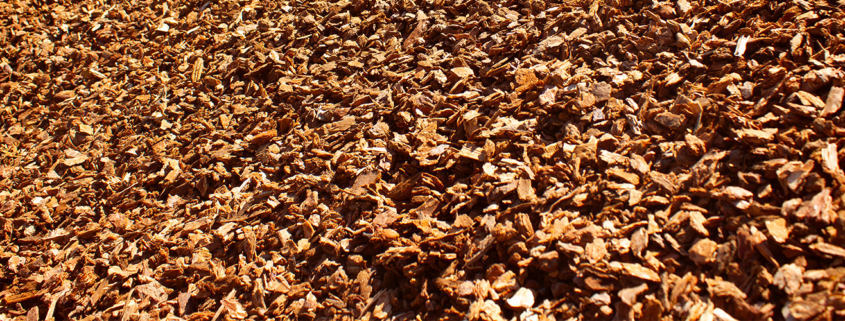3/4-inch nugget bark, is a type of mulch made from small pieces of bark that are approximately 3/4 of an inch in size. While mulch is typically considered a softscape element, it can be used in hardscaping to provide certain benefits. Here are some common uses of 3/4 nugget bark in hardscaping:
- Pathways: 3/4 nugget bark can be used to create pathways in hardscaped areas. It provides a natural and visually appealing surface that allows for easy walking while minimizing soil erosion and weed growth. The bark’s texture also offers a comfortable and cushioned feel underfoot.
- Tree rings: When hardscaping around trees, 3/4 nugget bark can be used to create tree rings. By placing a layer of bark around the base of the tree, you can create a defined and attractive border. This helps prevent weed growth, retain moisture in the soil, and protect the tree’s roots from temperature extremes.
- Garden beds: In hardscaped garden beds or raised planters, 3/4 nugget bark can serve as a mulch layer. It helps conserve moisture in the soil, suppresses weed growth, and provides insulation for plant roots. The bark’s natural appearance also adds an aesthetic element to the garden bed.
- Decorative features: 3/4 nugget bark can be used as a decorative element in hardscaping. For example, it can be spread around outdoor seating areas or incorporated into landscape designs to create contrast with other hardscape materials like stone or concrete. The bark’s natural color and texture can add visual interest and complement the overall design.
- Erosion control: If you have sloped or uneven terrain in your hardscaped area, 3/4 nugget bark can help control erosion. By spreading a layer of bark on the inclined surfaces, it can help slow down the flow of water, reduce runoff, and prevent soil erosion.
It’s important to note that 3/4 nugget bark is primarily used as a decorative and functional element in hardscaping, rather than as a structural material. It can enhance the overall aesthetics of your hardscape design while providing practical benefits such as weed suppression, moisture retention, and erosion control.





